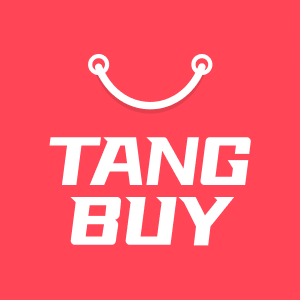Everything You Need To Know About Dropshipping

Dropshipping lets you sell things online without storing them. A third-party supplier keeps the products and sends them to buyers. This way of selling is now very popular. About 27% of online shops use dropshipping to fill orders. Many people like dropshipping because you do not need much money to begin. You can spend your time on marketing and helping customers. The suppliers do the other jobs.
If you want a business with less risk and more choice, dropshipping might be good for you.
Key Takeaways
Dropshipping lets you sell things online without keeping stock. This lowers your starting costs and risks. You work with suppliers who keep, pack, and send products to your customers. Picking the right platform and tools helps you run your shop well. Good suppliers and strong links with them help keep customers happy. Plan your budget well. Include website, marketing, and other fees so you do not get caught out. Follow legal rules like business registration, taxes, and customer protection to stay safe. Research products well to find things people want. Avoid poor quality or banned goods. Great customer service, clear returns rules, and fast replies help build trust and loyalty.
Dropshipping Basics
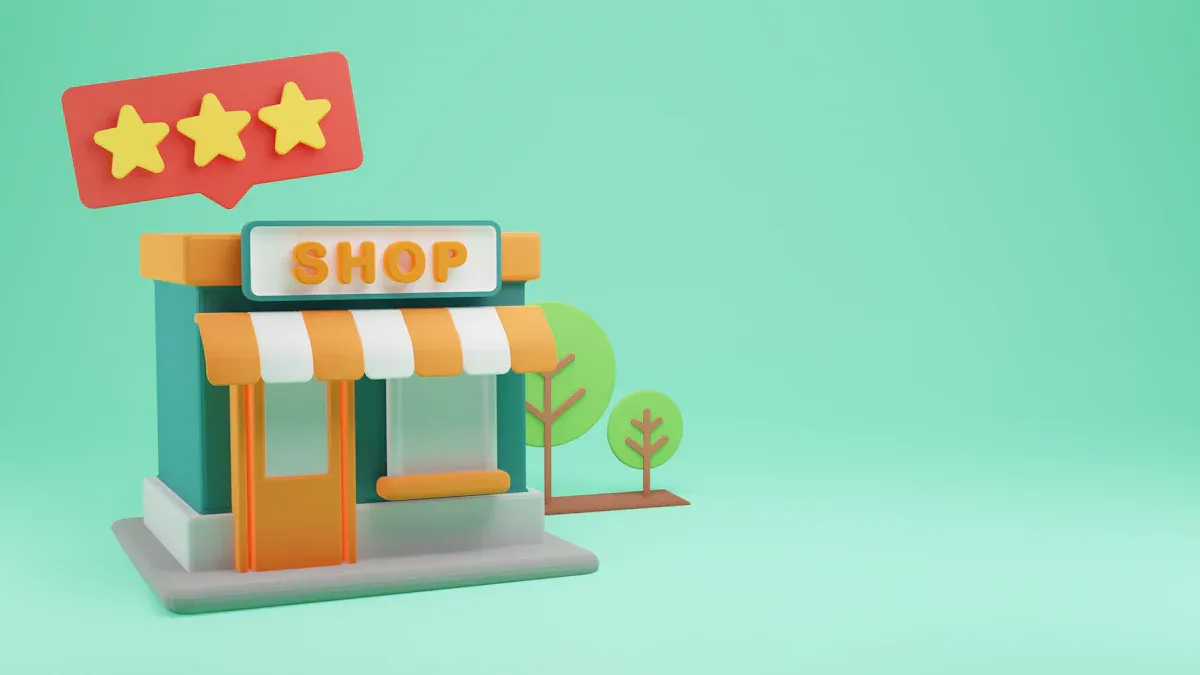
What Is Dropshipping
You may ask what dropshipping is. Dropshipping lets you sell things online without holding any stock. You do not need to buy or keep products. A supplier keeps the items for you. When someone buys from your shop, the supplier sends the product to your customer. This way, you can start a business with less money and less risk.
Let’s look at how dropshipping is different from normal online shops:
Aspect | Dropshipping Model | Traditional E-commerce Model |
|---|---|---|
Inventory Management | Third-party suppliers handle stock. You do not need to buy or store anything. | The business buys, stores, and looks after all the stock. |
Initial Investment | You spend less money at the start. You do not buy stock first. | You spend more money at the start. You must buy and store stock. |
Control Over Stock | You have little control over stock and quality. | You control all the stock and its quality. |
Fulfilment | Suppliers send out the orders. | The business or another company sends out the orders. |
Risk | You risk less money because you do not buy stock first. | You risk more money because you buy stock before selling it. |
Dropshipping helps you save money and time. You do not need to keep products in a warehouse. If something does not sell, you do not lose money. But you cannot control the stock or check the quality yourself.
How It Works
Here are the steps in a dropshipping business:
You choose a dropshipping supplier who stores and ships products.
You make your online shop and add the supplier’s products.
A customer buys something from your website.
You send the order to your supplier. Many shops use apps to do this for them.
The supplier packs and sends the product to your customer.
Your customer gets the product. You help if they have questions or problems.
Tip: Talk often with your supplier. This helps stop mistakes and keeps your customers happy.
This way, you can spend more time on marketing and helping customers. You do not need to pack boxes or run a warehouse.
Key Players
You work with three main groups in dropshipping:
Role | Main Responsibilities |
|---|---|
Retailers | You run your online shop. You show products, set prices, and take orders. You send orders to your supplier and help customers with questions. |
Suppliers | Suppliers make or find products. They keep stock, pack orders, and send items to your customers. They must make sure orders are right and arrive on time. |
Customers | Customers buy from your shop. They want a good shopping experience, quick delivery, and good products. They get their orders from your supplier, but you help them if they need support. |
You are the link between your customers and your suppliers. Your job is to make sure everything goes well, from when someone visits your shop to when they get their order.
Getting Started
Legal Setup

Before you launch your dropshipping business, you need to sort out the legal side. This step helps you avoid trouble later. Here’s what you should do:
Get a business licence or sales permit if your state or local area asks for one.
Register for sales tax and pay income tax. This keeps you on the right side of the law.
If you sell on platforms like Amazon or eBay, follow their rules.
Protect your customers’ data. Keep their information safe and private.
Make sure your products are safe and legal. Do not sell anything fake or copied.
Tell the truth about your products. Honest descriptions build trust.
If you want to sell food, supplements, or alcohol, you need special permits.
Keep records of your sales and follow anti-money laundering rules.
Do not sell to banned countries or people.
Check that your suppliers do not use forced labour.
If you are under 18, you need a parent or guardian to help with contracts and business registration.
Tip: Always use written contracts with your suppliers. This protects you if something goes wrong.
You should also think about setting up a limited company (LLC) or corporation. This can protect your personal money if your business faces problems.
Budget Needs
You do not need a fortune to start dropshipping, but you should plan your budget. Here’s a table to help you see what you might spend:
Budget Category | Estimated Cost Range (USD) | Notes/Examples |
|---|---|---|
Website Setup | $50 - $500 (templates) | Shopify or similar platforms |
$2,000 - $15,000 (custom) | For a unique, professional look | |
Domain Registration | $10 - $20 per year | Your shop’s web address |
Hosting | $40 - $200 per year | Where your website lives online |
Dropshipping Platform Fees | $20 - $100 per month | Tools like Oberlo or AliDropship |
Tools and Plugins | $10 - $100 per month | For managing products and orders |
Initial Marketing Budget | $400 - $7,000 | Ads, SEO, social media |
Overall Startup Budget | $1,500 - $10,000 | Most new shops fit in this range |
You can start small with a basic setup, or spend more for a custom site and bigger marketing push. Most people begin with $1,500 to $10,000.
Essential Tools
The right tools make dropshipping much easier. You want to save time and avoid mistakes. Here are some top picks for beginners:
AutoDS: This all-in-one tool helps you find products, update stock, and process orders automatically. It checks prices and stock in real time, so you do not sell things that are out of stock.
Spocket: Great for finding suppliers with fast shipping. It lets you process many orders at once and keeps your inventory up to date.
Inventory management software: These tools sync your shop with your suppliers. You get alerts when stock runs low, so you can act fast.
Order fulfilment automation: These tools send orders straight to your suppliers and track shipping. This means fewer mistakes and happier customers.
Note: Automation tools help you focus on growing your business instead of doing boring tasks.
With these basics sorted, you are ready to build your online shop and start selling.
Online Store
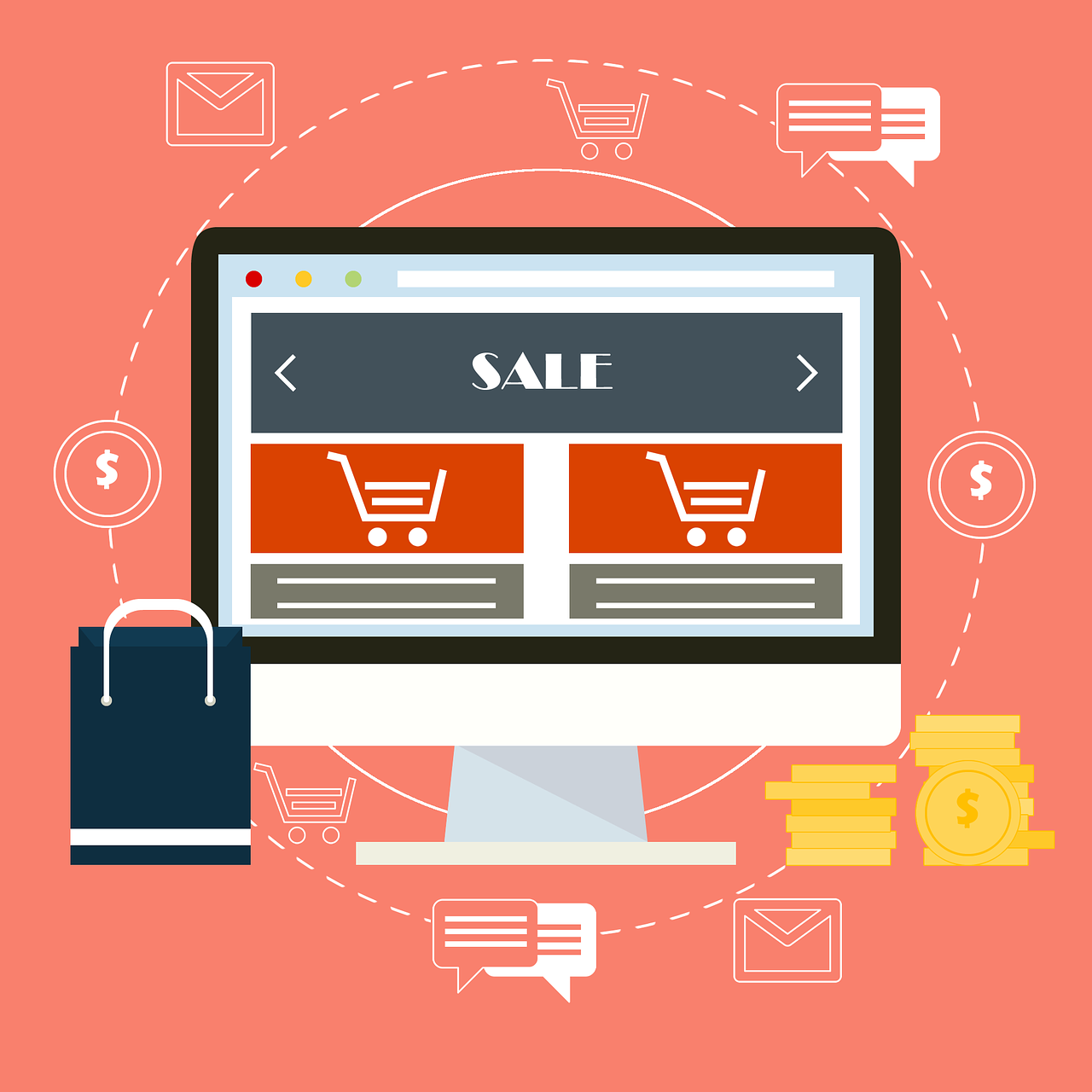
Setting up your online store is one of the most exciting steps in your dropshipping journey. You get to choose how your shop looks, what features it has, and which platform fits your needs best. Let’s break down your main options and what makes each one stand out.
Here are some of the most popular e-commerce platforms for dropshipping:
Shopify: This is the top choice for many. You do not need to know how to code. Shopify gives you a simple setup, lots of themes, and a huge app store. You can add dropshipping apps like DSers or Oberlo with just a few clicks. Shopify also handles payments, security, and mobile shopping. If you want a store that works well from day one, Shopify is a safe bet.
WooCommerce: If you already use WordPress, WooCommerce might suit you. It lets you customise your shop more, but you may need some technical skills. WooCommerce works with many dropshipping tools, such as DSers and Spocket.
BigCommerce: This platform is great if you plan to grow fast or sell lots of products. BigCommerce offers strong features for bigger shops and supports dropshipping apps like Spocket and Doba.
Wix: Wix is perfect for beginners. You can drag and drop to build your site. It connects with dropshipping apps like Spocket and DSers. Wix keeps things simple, so you can focus on selling.
Tip: Think about your budget, your tech skills, and how much you want to customise your shop before you pick a platform.
Many dropshipping apps work with several platforms. For example, Printify links to Shopify, Etsy, TikTok Shop, and more. DSers connects with Shopify, WooCommerce, and Wix. Spocket supports Shopify, BigCommerce, Wix, and WooCommerce. Doba even works with Amazon and eBay. This means you can choose the platform that fits you best and still use top dropshipping tools.
Here’s a quick table to help you compare:
Platform | Best For | Dropshipping App Support | Ease of Use |
|---|---|---|---|
Shopify | All levels | DSers, Oberlo, Spocket, Printify | Very easy |
WooCommerce | WordPress users | DSers, Spocket, Doba | Moderate |
BigCommerce | Large shops | Spocket, Doba | Easy |
Wix | Beginners | DSers, Spocket | Very easy |
Once you pick your platform, you can start designing your shop. Choose a theme that matches your brand. Add clear product photos and honest descriptions. Make sure your shop works well on phones and tablets. Test your checkout process to spot any problems before you launch.
Remember: Your online store is your shop window. A clean, easy-to-use site helps you win trust and make more sales.
Pros and Cons
Advantages
Dropshipping comes with some big benefits. You might find these reasons make it a great choice for your first online business:
Lower upfront costs and less risk: You do not need to buy stock before you sell. This means you can start your shop with less money and worry less about losing it.
Wide product selection: You can offer many different products in your shop. You do not have to pay for them until someone buys.
Location independence: You can run your business from anywhere. All you need is a laptop and internet connection.
Easy to scale: You can add or remove products quickly. You do not have to worry about storage or shipping.
Access to a global market: You can sell to people all over the world. You are not limited by where you live.
Reduced overheads: You do not need to rent a warehouse or hire staff to pack orders. This keeps your costs low.
More time for marketing and customer service: You can focus on growing your brand and helping your customers, instead of packing boxes.
Tip: Dropshipping lets you test new ideas without spending much. If a product does not sell, you can swap it out easily.
Disadvantages
Dropshipping is not perfect. You will face some challenges that you should know about before you start. Here is a table to help you see the main drawbacks:
Disadvantage | Explanation |
|---|---|
Suppliers handle stock and shipping. If they make mistakes, your customers may get upset. | |
Quality maintenance challenges | You cannot check products before they ship. Bad items can lead to complaints and refunds. |
Difficult to build a brand | Suppliers often get credit for products. It is hard to stand out from other shops. |
Customer service issues | You must fix problems, but you rely on suppliers for answers. This can slow things down. |
High competition | Many people start dropshipping because it is easy. This means lots of shops sell the same things. |
Low profit margins | You may only make a small amount on each sale. You need lots of sales to earn good money. |
Supplier prices can change. Your profits might go up and down. | |
Hidden costs | Advertising and platform fees can add up. These costs eat into your profits. |
Selling channel policies | Some platforms have strict rules. They might limit what you can sell or how you sell it. |
You might feel frustrated when you cannot control every part of your business. Sometimes, you will need to deal with unhappy customers because of supplier mistakes. You also need to work hard to stand out in a crowded market.
Note: Dropshipping works best if you pick reliable suppliers and focus on great customer service. Always check supplier reviews before you start working with them.
Costs
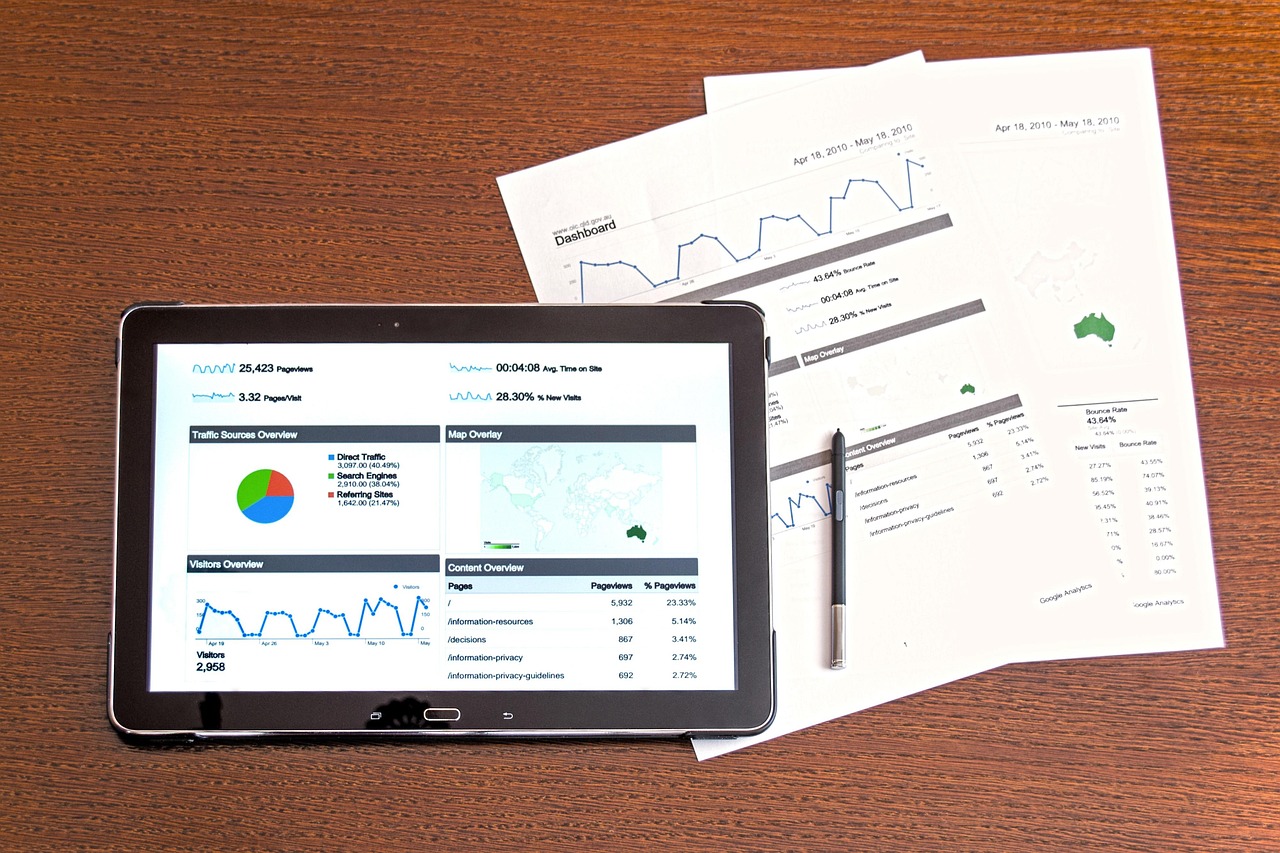
Upfront Expenses
You might think dropshipping is free to start, but you will need some money upfront. First, you need a domain name for your shop. This usually costs about $10 to $15 per year. You also need website hosting, which ranges from $5 to $30 each month. If you use a platform like Shopify, expect to pay around $29 per month for a basic plan.
Marketing is another big part of your starting budget. Most new shop owners spend about $300 to $500 per month on ads to test which products sell best. Payment gateways, such as PayPal or Stripe, charge about 2.9% plus 30 cents for every sale you make. You may want to invest in tools that help with automation, like email marketing or inventory management software. These tools can cost between $10 and $100 each month.
Supplier fees can also add up. Some platforms, like SaleHoo, charge between $27 and $97 per month. Others, like Worldwide Brands, ask for a one-time fee of $299. Shipping costs depend on where your supplier is and how fast you want items delivered. For example, ePacket shipping from China can cost between $7 and $27, while AliExpress Standard Shipping is usually under $5 but takes longer.
Most people spend a few hundred pounds to about £1,200 to get started, depending on the tools and suppliers they choose.
Ongoing Costs
Running a dropshipping business means you will face regular monthly and yearly costs. Here’s a table to help you see what to expect:
Cost Category | Description | Estimated Monthly Cost | Estimated Annual Cost |
|---|---|---|---|
Platform Fees | Shopify, WooCommerce, or other shop platforms | $24 - $299 | N/A |
Software Subscriptions | Email, CRM, analytics, automation tools | $50 - $500 | N/A |
Domain Registration | Keeps your website address active | N/A | $10 - $20 |
Insurance | Protects your business from risks | N/A | $500 - $1,500 |
Marketing Spend | Ads, social media, influencer fees | $500 - $5,000 | N/A |
Transaction Fees | PayPal, Stripe, or other payment processors | 2-3% per transaction | N/A |
Shipping costs per order | $3 - $10 per shipment | N/A | |
Customer Service | Support costs (live chat, email, phone) | $15 - $50 per hour | N/A |
Loan Payments | If you borrowed money to start | Variable | Variable |
You will pay for your platform and software every month. Marketing costs can change, but you should always set aside money for ads. Payment processors take a small cut from every sale. Shipping costs depend on your supplier and where your customers live. Insurance is not required, but it can save you trouble if something goes wrong.
Hidden Fees
Some costs can sneak up on you. Here are some hidden fees you should watch out for:
Registration and licensing fees, which can range from $50 to $500 depending on your area and what you sell.
Supplier fees, which may be per order or a monthly charge.
Returns and refunds, including shipping and restocking fees, can eat into your profits.
Customer service costs, such as hiring help or using paid support tools.
Inventory management issues, like supplier stock errors, can lead to lost sales.
Shipping delays, which may cost you extra if you need to upgrade shipping or offer discounts to unhappy customers.
Taxes, which you must pay based on your business structure and where you sell.
Product research tool fees, which can be $10 to $100 per month if you use special software to find winning products.
Tip: Always read the fine print before signing up for any service. Small fees can add up quickly and affect your profits.
By planning for these costs, you can avoid surprises and keep your dropshipping business running smoothly.
Legal and Compliance
Business Structure
Choosing the right business structure sets the foundation for your dropshipping journey. You have a few options. Many people start as a sole trader because it is simple and quick. You can use your own name or register a business name. If you want more protection, you might set up a limited company (Ltd). This keeps your personal money safe if your business faces trouble. Some dropshippers join with others and form a partnership. Each structure has its own rules for taxes and paperwork.
Tip: Think about your long-term goals. If you plan to grow big, a limited company might suit you best.
A table can help you compare:
Structure | Setup Difficulty | Personal Liability | Tax Treatment |
|---|---|---|---|
Sole Trader | Easy | High | Personal income tax |
Limited Company | Moderate | Low | Corporation tax |
Partnership | Moderate | Shared | Personal income tax |
You should always check local rules before you decide. Some countries have special requirements for online shops.
Taxes
You must pay attention to taxes from day one. Dropshipping businesses face different tax rules, especially if you sell to other countries. Here are some key points to remember:
Learn about VAT and customs rules in every country where you sell.
Keep good records of all your sales, costs, and stock.
Check customs duties and import taxes for each country. Make sure you declare them properly.
Tell your customers about any customs fees so they do not get a surprise.
You can offer Delivery Duty Paid (DDP) shipping to make things easier for your customers.
Use tax tools like Link My Books to help with VAT calculations and reports.
Ask a tax expert for advice if you sell in many countries.
You may need to pay income tax, sales tax, and customs duties. The rules change depending on where you and your customers live. Some places offer tax breaks if you have the right paperwork. Always stay organised and get help if you feel lost.
Consumer Laws
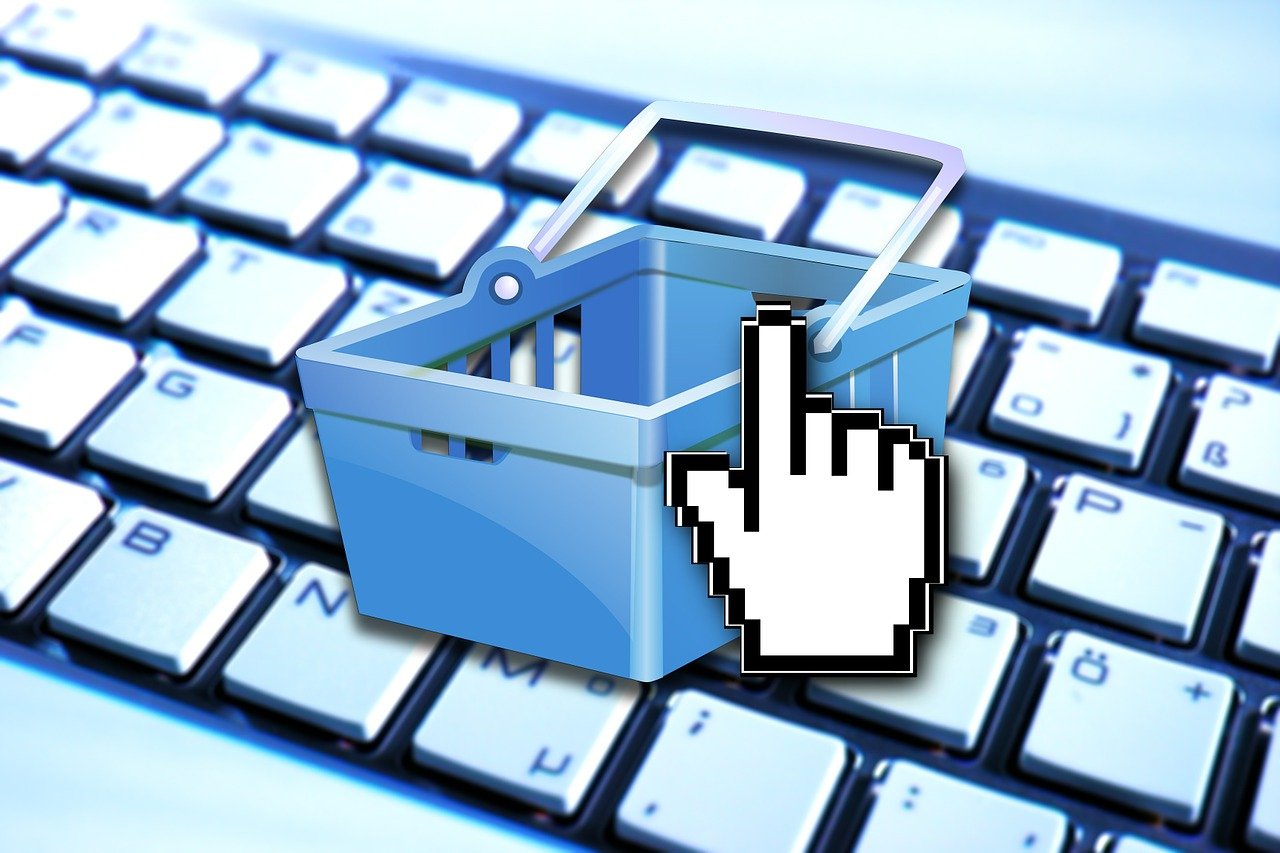
You must follow consumer protection laws to keep your business safe and your customers happy. In the EU, the Consumer Rights Directive says you must give clear details about your products, prices, and delivery costs. Customers have the right to cancel their order within 14 days and get a full refund, including standard delivery charges.
You also need to protect customer data. The GDPR law in Europe means you must get clear consent before collecting any personal information. If there is a data breach, you must tell the authorities within 72 hours. Not following these rules can lead to big fines.
In the US, the Federal Trade Commission (FTC) makes sure you do not use false or tricky ads. You must show honest product descriptions and clear payment terms. Both the EU and US want you to keep customer data safe and respect privacy.
Always give clear information about your products and prices.
Offer fair return and refund policies.
Get permission before collecting customer data.
Use secure payment systems.
Train your team on data protection.
Note: Following these laws builds trust and helps your business grow. If you are unsure, ask a legal expert for help.
Product Selection

Research Methods
Finding the right products is the heart of dropshipping. You want items that people want to buy, but you also need to spot trends before everyone else does. There are several ways you can research products. Some methods use special tools, while others rely on watching what’s popular online.
Here’s a handy table to help you compare different research methods:
Research Method | How It Works | Pros | Cons |
|---|---|---|---|
Product Research Platforms | Use tools like AdSpy or SellTheTrend to spot products with strong sales or social media buzz. | Fast, data-driven, shows what’s working. | Subscription fees can add up. |
Organic Social Media Research | Watch TikTok or Instagram for trending products and viral posts. | Free, real-time, direct feedback. | Takes time, trends change quickly. |
Trend Analysis | Use Google Trends or Exploding Topics to track what’s rising in popularity. | Predicts future demand, covers many markets. | Needs patience, not all trends last. |
Spy on Shopify Stores | Use ShopHunter or SimilarWeb to see what top shops are selling and how they market. | Learn from the best, get new ideas. | Data can be tricky to read. |
Spy on Marketplaces | Check Amazon or eBay for best-sellers using tools like JungleScout. | See what’s hot, saves time. | Can be overwhelming, trends move fast. |
Tip: Mix a few methods to get a full picture. Don’t rely on just one source.
Niche Focus
Choosing a niche is one of the most important steps in dropshipping. When you focus on a specific group of customers, you make it easier to stand out. A good niche helps you avoid too much competition and lets you speak directly to your audience. For example, selling eco-friendly pet toys targets pet owners who care about the planet.
Here’s why picking a niche works:
You target a clear audience, making your shop more memorable.
Tools like Google Trends and Semrush help you spot what’s hot in your chosen area.
Social media shows you what your audience likes right now.
Marketplaces like Amazon reveal which products sell well in your niche.
Avoid niches that are too broad or too narrow. Aim for a balance.
Offer something unique, like custom designs or eco-friendly options.
Build a community around your niche to boost loyalty.
Note: If you pick the wrong niche, you might struggle with low sales or too much competition. Always check if people want what you plan to sell.
Market Demand
You need to know if people actually want your products. Luckily, there are plenty of tools to help you check demand before you invest time and money. Here’s a table with some popular options:
Tool Name | Key Features | Pricing |
|---|---|---|
AliExpress Dropshipping Center | Tracks sales data, shows hot products, gives shipping info | Free with registration |
Niche Scraper | Finds trending products, shows popularity scores | Free plan; Pro £40/month |
Dropship Spy | Tests products, tracks trends, analyses ads | £30/month or £90/year |
Thieve.co | Shows popular products, gives niche reports | Free trial; £12/month |
Ecomhunt | Curated winning products, competitor analysis | Free limited; paid plans |
Sell The Trend | AI product discovery, multi-platform sourcing | 7-day free; £32/month |
You can also watch your competitors, check hashtags on social media, and use Google Trends to see what’s getting popular. Always avoid restricted or risky products, like fake brands or items with safety issues. Stick to products you can legally sell and ship.
Remember: The best products solve a problem or make life easier for your customers. Start with what people want, and you’ll have a better chance of success.
Suppliers
Finding Suppliers
You need good suppliers for your dropshipping shop to work well. The right suppliers help you keep customers happy and stop order problems. There are a few ways to find suppliers you can trust:
Try special marketplaces like AutoDS. These sites link you with big companies like Amazon, AliExpress, and private suppliers. You get things like quicker shipping and can talk to suppliers directly.
Use Google to search for suppliers in your niche. For example, type “UK eco-friendly pet toy supplier” to find local ones. Always check if the supplier seems honest.
Use Google Lens. Take a picture of a product and use the app to see where it is sold.
Look at third-party sites like Amazon, eBay, AliExpress, and Alibaba. These places have lots of suppliers, but you must check them well.
Use supplier lists and dropshipping apps. These tools often show suppliers who have already been checked. They help you add products and send orders easily.
Join groups on social media and online forums. TikTok, Facebook groups, and Reddit can help you find new products and get tips from other sellers.
Go to trade shows or business events. Meeting suppliers in person lets you see products and talk about deals face-to-face.
Tip: Check what your competitors do. Find out who their suppliers are. This can help you find good suppliers quickly.
A good supplier gets products from trusted sellers, sends orders fast, and uses safe delivery services. Some may ask for a fee, but this often means they work with many happy dropshipping shops.
Vetting Suppliers
Not every supplier will be right for you. You must check each one before you trust them with your shop. Here is a simple list to help you check suppliers:
See how long the supplier has been working. Read reviews and look for ratings from other shop owners.
Ask for samples. This lets you check the quality and packaging yourself.
Test how they talk to you. Send a message and see how fast and clearly they answer.
Check their delivery times and if they offer tracking. Fast and safe delivery keeps customers happy.
Make sure they follow all rules and have the right certificates, especially for special products.
Place a test order. This helps you spot problems before you start working together.
Look at their return and refund rules. Fair rules protect you and your customers.
You should also check if the supplier is a manufacturer, wholesaler, or aggregator. Each type has good and bad points. Manufacturers often have the best prices, while aggregators let you find many products in one place.
Note: Always look for clear prices and simple rules. If something feels wrong, trust your feelings and look for another supplier.
Building Relationships
Good relationships with suppliers help your shop grow. When you work well with suppliers, you get better deals, faster help, and fewer mistakes. Here are some ways to build strong partnerships:
Talk often and clearly. Use email, chat, or video calls to stay in touch and fix problems quickly.
Set clear goals and tell your supplier what you need and when.
Discuss more than just price. Talk about payment, shipping, and special deals.
Offer regular orders or long-term deals. Suppliers like steady business and may give you better prices.
Visit suppliers if you can. Meeting in person builds trust and helps you learn about their business.
Watch how they do. Check if they deliver on time, keep quality high, and answer questions quickly.
Respect different cultures. If your supplier is in another country, learn about their way of doing business.
If there are problems, stay calm and work together to fix them. Good suppliers want your shop to do well too.
Building strong relationships takes time, but it is worth it. You get better help, more support, and a partner who helps your shop stand out.
Dropshipping Platforms

Platform Options
There are lots of dropshipping platforms you can use. Some work like marketplaces. Amazon, eBay, and TikTok Shop are examples. These let you reach many shoppers right away. You can start selling fast. But you cannot change how your shop looks much. You also have less control over your brand.
Other platforms let you make your own online shop. Shopify, WooCommerce, and Wix are popular choices. You can decide how your shop looks and feels. You control your brand and how customers see your shop. You can use automation tools to help with your work.
Here is a table showing some top dropshipping platforms and what they give you:
Platform | Pros | Cons |
|---|---|---|
Dropified | Automated order fulfilment, product research, customisation, integrates with major e-commerce sites | Expensive plans, steep learning curve, limited supplier options |
Wholesale Central | Free to use, wide supplier range, no middleman fees, diverse products | Manual processes, variable supplier quality, lacks automation, outdated interface |
You can also try Tangbuy, DSers, Spocket, SaleHoo, and Doba. Each one has different tools and ways to find suppliers. Some focus on US and EU suppliers. Others help you reach buyers all over the world.
Tip: Think about what you want. If you want to start quickly and get lots of visitors, use a marketplace. If you want to build your own brand, pick a platform you can change.
Features
When you choose a platform, look for features that help you grow. The right features save you time and help your business get bigger. Here are some important things to look for:
Scalability – Your platform should let you add more products and customers as you grow.
Automation – Tools that do orders and update stock for you make things easier.
Integrations – Connect your shop to marketing, payments, and email tools.
Customer Support – Good help lets you fix problems fast.
Shipping Options – Easy links to suppliers and shipping keep buyers happy.
Multi-currency and Payment Choices – Let people pay in different ways.
Analytics – Data shows what works and what needs to change.
Marketing Tools – SEO and social media tools help you find new buyers.
User Reviews and Community – Real feedback and advice from others can help you.
Platforms like DSers, Spocket, and Dropified have strong automation and supplier links. Wholesale Central gives you many suppliers but less automation.
Note: Automation and analytics are very important if you want to save time and grow your shop.
Store Setup
Making your dropshipping shop is fun. You can do this on Shopify, WooCommerce, or other platforms. Here is a simple guide to help you:
Pick your platform. Shopify is easy and has everything in one place. WooCommerce gives you more control but needs WordPress.
Design your shop. Choose a theme that fits your brand. Add pages for refunds, terms, and privacy.
Set up payments. Add PayPal or Stripe so people can pay safely.
Find suppliers. Use apps like DSers or Spocket to add products and manage orders.
Add products. Write clear descriptions and use good photos. Put products into groups.
Set shipping options. Show delivery times and costs clearly.
Test your checkout. Make sure buying is easy and works well.
Share your shop. Use ads, social media, and email to get customers.
Remember: A simple and easy shop helps you build trust and get more sales. Start small, test everything, and make changes as you learn.
Pricing and Marketing
Pricing Strategy
Getting your pricing right can make or break your dropshipping shop. You want to cover your costs, stay competitive, and still make a profit. There are several ways you can set your prices. Here’s a table to help you compare the most popular strategies:
Pricing Strategy | Description | Key Benefit for Profit Margins |
|---|---|---|
Cost-Based Pricing | Add a markup (20-30%) to your total costs | Keeps your profits steady |
Value-Based Pricing | Set prices based on what customers think your product is worth | Lets you charge more for unique items |
Competitor-Based Pricing | Match or beat your rivals’ prices | Helps you stay in the game |
Bundle Pricing & Upselling | Offer sets or extras to boost order value | Increases your earnings per customer |
Psychological Pricing | Use prices like £19.99 to encourage more sales | Makes products look cheaper and boosts sales |
Dynamic Pricing | Change prices with demand or trends using tools | Maximises profits in busy times |
You might also try tiered pricing, where you offer discounts for buying more, or penetration pricing, where you start low to attract buyers and raise prices later. Each method has its own pros and cons:
Pricing Strategy | Pros | Cons |
|---|---|---|
Value-Based Pricing | Builds loyalty, premium feel | Can scare off bargain hunters |
Competitive Pricing | Simple, keeps you relevant | Can start price wars |
Tiered Pricing | Attracts bulk buyers | Can confuse some shoppers |
Dynamic Pricing | Flexible, boosts profit in high demand | Needs good tools, can annoy customers |
Psychological Pricing | Easy to use, increases sales | Not always effective long-term |
Penetration Pricing | Quick market entry, brand awareness | Hard to raise prices later |
Tip: Always check your costs first. Use a mix of strategies to find what works best for your shop and your customers.
Marketing Channels
You need to get your shop in front of the right people. The best marketing channels for dropshipping give you a good return on your money and help you grow fast. Here are some top choices:
Influencer collaborations: Work with micro-influencers to reach loyal followers without spending too much.
Content creation: Make videos, write blogs, and share customer photos. This builds trust and helps your shop show up in search results.
Email marketing: Send special offers, reminders, and news to your customers. This keeps them coming back.
SEO (Search Engine Optimisation): Use the right keywords in your product pages and blog posts. This brings in free traffic over time.
Paid social media ads: Use Facebook and Instagram ads to target the people most likely to buy from you. These ads can bring quick sales.
YouTube and TikTok: Share product videos and how-to guides. These platforms help you reach new audiences, especially younger shoppers.
Pinterest: Great for niches like home, fashion, and gadgets. Pins can drive steady traffic to your shop.
Retargeting ads: Remind visitors who didn’t buy to come back and finish their order.
Note: Mix paid ads with organic content. This gives you both quick wins and long-term growth.
Brand Building
You want your shop to stand out and be remembered. Building a strong brand helps you win trust and turn shoppers into loyal fans. Here’s how you can do it:
Define your brand’s mission, values, and personality. Decide what makes your shop special and how you want people to feel when they visit.
Research your audience. Create buyer profiles so you know what your customers want and expect.
Design a clear visual identity. Pick colours, a logo, and fonts that match your brand’s style. Use them everywhere—on your website, social media, and emails.
Keep your look and message the same across all channels. Consistency helps people remember you.
Share your story. Tell customers why you started your shop and what you care about. This builds a real connection.
Work with reliable suppliers who offer good quality and custom options. This lets you add your logo or special packaging.
Use social media to show off your products, share reviews, and chat with your audience.
Invest in great product photos. Clear, high-quality images make your shop look professional.
Offer top-notch customer service. Quick replies and easy returns make people trust you.
Use email marketing to keep in touch and reward loyal customers with special deals.
Building a brand takes time, but it pays off. A strong brand brings repeat buyers, more referrals, and helps you stand out in a busy market.
Customer Service
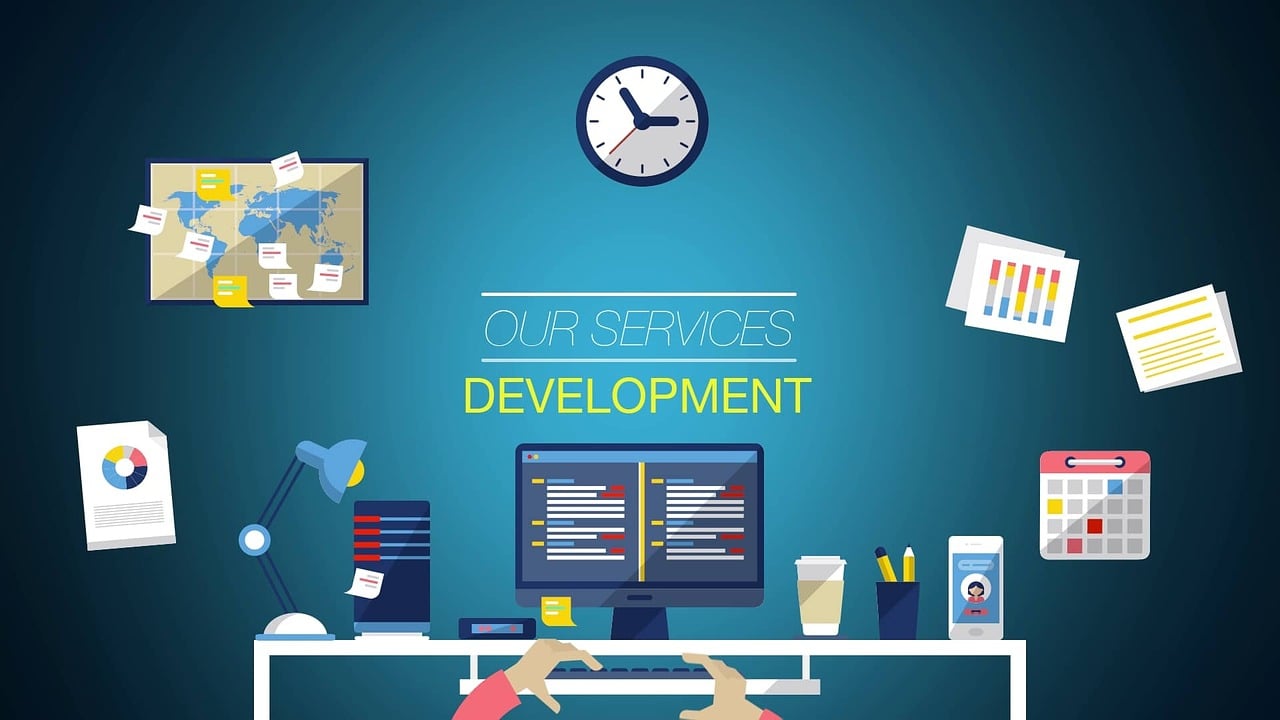
Great customer service can set your dropshipping shop apart from the rest. When you help your customers quickly and kindly, they are more likely to buy from you again. Let’s look at how you can handle enquiries, manage returns, and collect feedback.
Handling Enquiries
You will get questions from customers every day. Some people want to know about products. Others ask about shipping or need help with their order. Quick and friendly replies make a big difference.
Here are some tips to help you handle enquiries well:
Reply fast: Try to answer within 24 hours. Fast replies show you care.
Use clear language: Keep your answers simple. Avoid jargon.
Be honest: If you do not know the answer, say so. Promise to find out and get back to them.
Stay polite: Even if a customer is upset, stay calm and friendly.
Use templates: Save time by making templates for common questions. Change them a bit to fit each customer.
Tip: Add a FAQ page to your shop. This helps answer common questions before people even ask.
Returns
Returns are part of every online business. You cannot avoid them, but you can make the process easy for your customers. A simple returns policy builds trust and keeps people happy.
Here’s how you can manage returns:
Write a clear returns policy. Put it on your website where everyone can see it.
Tell customers how to start a return. Give them step-by-step instructions.
Work with your supplier. Make sure they know your policy and can process returns quickly.
Offer refunds or exchanges. Let customers choose what works best for them.
Keep records of all returns. This helps you spot problems and improve your service.
A good returns policy might look like this:
Policy Point | Example |
|---|---|
Return window | 30 days from delivery |
Condition | Unused and in original packaging |
Refund method | Money back to original payment method |
Who pays postage | Customer pays unless item is faulty |
Note: Always check your supplier’s return rules before you promise anything to your customers.
Feedback
Feedback helps you learn what works and what needs fixing. Happy customers often leave good reviews. Unhappy ones can help you spot problems early.
Ways to collect and use feedback:
Ask for reviews: Send a follow-up email after each order. Say thank you and ask for a review.
Read all feedback: Take time to read both good and bad comments.
Reply to reviews: Thank people for kind words. Say sorry and offer help if someone is unhappy.
Use feedback to improve: If you see the same complaint more than once, fix the problem.
Remember: Good customer service turns buyers into loyal fans. Listen, learn, and always try to do better.
Common Mistakes

Budget Errors
Many new dropshippers make mistakes with money. You might think dropshipping is cheap, but costs can add up fast. If you do not plan your budget, you could run out of money before you make your first sale.
Here are some common budget errors you should watch out for:
Underestimating start-up costs: You need to pay for your website, marketing, and tools. Some people forget about these and get a shock later.
Ignoring ongoing fees: Monthly charges for apps, hosting, and ads can eat into your profits.
Spending too much on ads: It is easy to waste money on Facebook or Google ads if you do not test small first.
Not saving for returns or refunds: Some orders will come back. You need money set aside for these.
Skipping a rainy day fund: Problems happen. If you have no backup money, your shop could close.
Tip: Make a simple budget before you start. Write down every cost you can think of. Check your spending every week. This helps you spot problems early.
A quick table can help you see where your money might go:
Expense Type | Example Costs |
|---|---|
Website & Hosting | £20 - £50 per month |
Marketing & Ads | £100 - £500 per month |
Apps & Tools | £10 - £100 per month |
Returns & Refunds | £50+ per month |
Emergency Fund | £200+ set aside |
Product Choice
Picking the wrong products can ruin your dropshipping shop. You might choose items you like, but your customers do not want them. Sometimes, you pick products that are too common or too hard to sell.
Here are some mistakes you should avoid:
Chasing every trend: Trends change fast. If you jump on every new thing, you might get stuck with products no one wants.
Selling what everyone else sells: If your shop looks like all the others, it is hard to stand out.
Ignoring quality: Cheap products can mean unhappy customers and lots of returns.
Not checking demand: If you do not check if people want your product, you might not get any sales.
Choosing restricted items: Some products are not allowed on certain platforms. Always check the rules first.
Note: Use product research tools and check what is selling well. Ask yourself, “Would I buy this?” If not, your customers might not want it either.
Customer Service Gaps

Customer service can make or break your dropshipping business. If you ignore your customers, they will not come back. Bad service can lead to bad reviews and lost sales.
Common customer service mistakes include:
Slow replies: If you take too long to answer, customers get upset.
No clear returns policy: People want to know how to send things back. If your policy is hard to find, they lose trust.
Not tracking orders: Customers want to know where their order is. If you do not give updates, they worry.
Ignoring complaints: If you do not fix problems, customers will tell others to avoid your shop.
Using only email: Some people like live chat or social media. If you only use email, you might miss messages.
Remember: Happy customers tell their friends. Unhappy ones tell everyone. Always listen, reply fast, and fix problems quickly. 😊
Legal Oversights

You might think legal stuff is boring, but skipping it can ruin your dropshipping business. Many new shop owners make legal mistakes without even knowing. These mistakes can lead to fines, lost money, or even getting banned from selling online. Let’s look at the most common legal oversights and how you can avoid them.
1. Not Registering Your Business
Some people start selling online without registering their business. This might seem easier at first, but it can cause big problems later. If you do not register, you might not be able to open a business bank account or get proper insurance. You could also face fines from your local council or tax office.
Tip: Register your business before you launch your shop. It keeps you safe and makes you look more professional.
2. Ignoring Tax Rules
Taxes can feel confusing, but you cannot ignore them. You need to pay income tax on your profits. If you sell to customers in the UK or EU, you may need to collect VAT. Some countries want you to pay sales tax, even if you live somewhere else.
Here’s a quick table to help you remember what to check:
Tax Type | Where It Applies | What You Need To Do |
|---|---|---|
Income Tax | Your home country | Report profits, pay tax |
VAT | UK, EU, some other places | Register if you hit the limit |
Sales Tax | USA, Canada, Australia | Check local rules |
If you do not follow tax rules, you could get a big bill later. Sometimes, tax offices add penalties and interest.
3. Breaking Consumer Laws
You must follow consumer protection laws. These rules protect your customers and build trust. For example, in the UK and EU, you must give customers a 14-day return window. You also need to show clear prices and delivery times. If you sell faulty goods, you must offer a refund or replacement.
Note: Always write your returns policy in simple language. Put it where customers can see it.
4. Not Checking Supplier Contracts

Some dropshippers skip reading supplier contracts. This is risky. You need to know who pays for returns, how refunds work, and what happens if orders go missing. If you do not have a clear contract, you might end up paying for mistakes that are not your fault.
5. Selling Restricted or Fake Products
You cannot sell everything you find online. Some products need special licences. Others, like fake designer goods, are illegal. Selling these can get your shop shut down or even lead to court.
How To Stay Safe
Register your business and keep records.
Learn about taxes in every country you sell to.
Write clear policies for returns and refunds.
Read every supplier contract before you sign.
Avoid risky or banned products.
If you feel unsure, ask a legal expert for help. It is better to be safe than sorry.
By watching out for these legal oversights, you protect your business and build trust with your customers. Stay smart, stay safe, and you will have a better chance of success.
Is Dropshipping Worth It
Profitability
You probably want to know if you can actually make money with dropshipping. The answer is yes, but you need to understand how profit works in this business. Many new shop owners see big sales numbers and think they are rich. In reality, profit is what you have left after you pay for products, ads, platform fees, and other costs.
Most successful dropshipping shops see profit margins between 10% and 30%. Your margin depends on what you sell, how much you pay your supplier, and how much you spend on marketing. If you sell on Amazon, beginners often see margins around 10%, while experienced sellers can reach 30%. Shopify shops usually land between 20% and 30%. Here’s a quick look:
Platform/Experience | Profit Margin Range | Average Profit Margin |
|---|---|---|
Amazon dropshipping | 10% (beginners) to 30% (experienced) | ~20% |
Shopify dropshipping | 15% to 50% | 20-30% |
General dropshipping | At least 10% (minimum), beginners aim for ~20% | N/A |
You can boost your profits by picking products with higher prices, lowering your costs, and using smart pricing. Many dropshippers find that increasing the average order value helps a lot. You might also notice that dropshipping often brings higher profits than holding your own stock, because you do not pay for storage or unsold items.
Remember: It usually takes three to six months before you see steady income. You need patience and a good plan.
Sustainability
You might wonder if dropshipping can last as a long-term business. The truth is, it can work for years, but only if you keep improving. The market changes quickly. Trends come and go. You need to watch what your customers want and update your products often.
Here are some things that help you build a sustainable shop:
Choose a niche that has steady demand, not just a passing trend.
Build strong relationships with reliable suppliers.
Focus on customer service. Happy customers come back and tell their friends.
Use automation tools to save time and avoid mistakes.
Keep learning about new marketing methods and tools.
Dropshipping does face challenges. Competition is high. Margins can shrink if you do not watch your costs. Some products become less popular over time. If you want your shop to last, you must treat it like a real business. Test new products, listen to feedback, and always look for ways to improve.
Tip: Shops that last the longest are the ones that care about their customers and adapt to change.
Who Should Try

Dropshipping is not for everyone, but it suits many people who want to start an online business with less risk. You might enjoy this business model if you:
Like the idea of running a shop from anywhere with just a laptop and internet.
Want to start a business without buying lots of stock up front.
Enjoy learning about marketing, trends, and customer service.
Have patience and do not expect to get rich overnight.
Are willing to test products and learn from mistakes.
You might struggle if you want full control over every part of your business or if you dislike dealing with customer questions. Dropshipping works best for people who are organised, good at solving problems, and ready to keep learning.
If you want a flexible way to try e-commerce, dropshipping gives you a chance to learn, grow, and maybe build something big.
You now know the basics of dropshipping. You have seen the pros, the cons, and the real costs. You understand how to pick products, find suppliers, and build your shop. Dropshipping can work if you stay organised and keep learning.
Think about your goals.
Start small and test ideas.
Always check your numbers.
Ready to take the next step? Do your research, trust your instincts, and give it a go!
FAQ
What is the biggest challenge in dropshipping?
You might find the hardest part is dealing with suppliers. Sometimes, they make mistakes or run out of stock. You need to fix problems quickly to keep your customers happy.
Can you start dropshipping with no money?
You need some money to start. You must pay for a website, marketing, and maybe some tools. Most people start with at least £500. Free options exist, but they limit your growth.
How long does it take to see profits?
Most people see their first profits after three to six months. You need time to test products, learn what works, and build your shop. Patience helps you succeed.
Do you need to register a business for dropshipping?
Yes, you should register your business. This keeps you safe and legal. It also helps you open a business bank account and pay the right taxes.
Can you dropship from anywhere in the world?
Yes! You can run your shop from any country. You only need a laptop and internet. Just check the rules for taxes and shipping in your country.
What products should you avoid in dropshipping?
Avoid fake brands, dangerous items, and anything banned on your selling platform. These products can get your shop closed or cause legal trouble.
How do you handle returns and refunds?
You need a clear returns policy. Work with your supplier to process returns. Always offer refunds or exchanges if the product is faulty. Good service builds trust.

TangBuy: A Smarter Way to Dropship in 2025
If you're looking to stay competitive with dropshipping in 2025, speed and trend-awareness are key. TangBuy helps you stay ahead with real-time product trends, fast fulfilment, and factory-direct sourcing. With over 1 million ready-to-ship items, 24-hour order processing, and seamless Shopify integration, TangBuy makes it easier to test, scale, and succeed in today's fast-moving eCommerce landscape.
See Also
Understanding The Real Expenses Of Dropshipping In 2025
Complete Guide To Starting A Dropshipping Venture In 2025
How Beginners Can Use Shopify Without Dropshipping In 2025
Required Capital To Begin Amazon Dropshipping Successfully
Essential Advice For Achieving eBay Dropshipping Success In 2025
